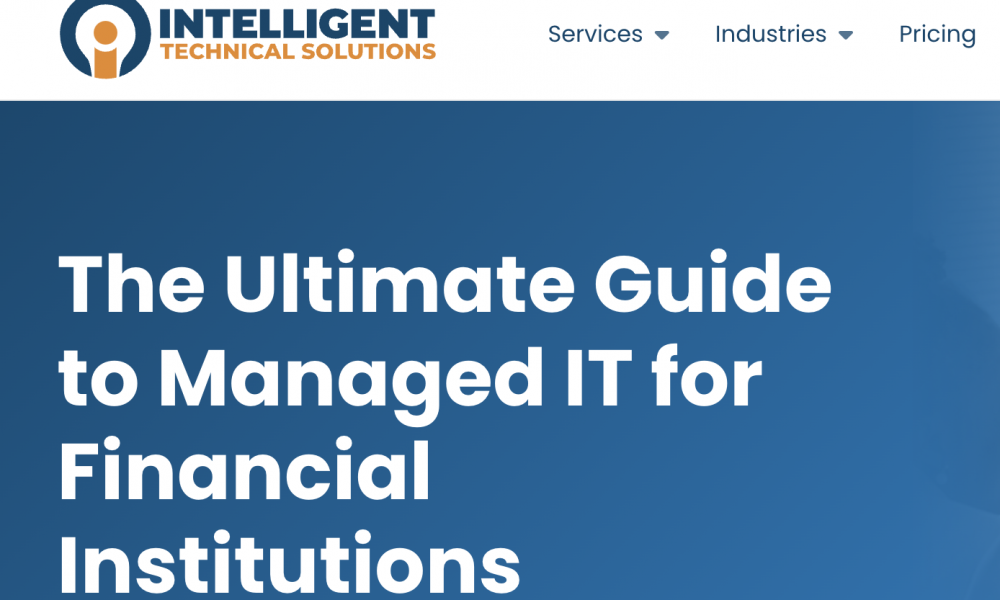Category: Business
Microsoft finalizes its largest-ever merger, a $69 billion acquisition of Activision Blizzard.
The journey that began in January 2022 when Microsoft first announced its intentions to acquire the gaming conglomerate Activision Blizzard King has been a long and eventful one. After successfully navigating a Federal Trade Commission lawsuit and meeting the requirements of UK antitrust authorities, it’s now official: Microsoft has taken ownership of the creators and publishers behind iconic titles like Call of Duty, Fallout, Overwatch, WarCraft, Diablo, Candy Crush, and many more.
In an unusual twist, there’s even a trailer for this corporate acquisition. The trailer showcases iconic moments from Microsoft’s previous acquisitions, including Halo and Fallout, as well as memorable moments from Activision Blizzard’s titles, including a meme-worthy StarCraft scene with its “Hell” preface removed.
Phil Spencer, the CEO of Microsoft Gaming, expressed his excitement, saying, “Whether it was the late nights spent playing the Diablo IV campaign with friends, gathering the whole family for our weekly Guitar Hero night in the rec room, or achieving epic victories in Candy Crush, some of my most cherished gaming memories were born from the creative studios of these teams. It’s truly incredible to welcome such legendary talent to Xbox.”
With this all-cash acquisition, Microsoft has now risen to become the third-largest gaming company by revenue, trailing only Tencent and Sony. This monumental deal surpasses Microsoft’s previous largest acquisition of LinkedIn in 2016 and bolsters its gaming division with 30 internal game development studios, including the renowned Bethesda group, for which it paid $7.6 billion in 2021. Activision Blizzard comprises over 8,500 employees across nine game studios, while its King mobile gaming division operates in over a dozen locations.
While Microsoft initially announced plans to integrate Activision Blizzard games into its Game Pass subscription package, this integration won’t take place until at least 2024. The concerns surrounding the creation of a dominant force in game streaming were a significant focus for both the FTC and UK regulators. In response, Microsoft worked to address these concerns by offering its games on rival platforms, such as GeForce Now, and in Europe, striking deals with competitors like Ubisoft.
Efforts to alleviate concerns that their titles would become exclusive to Windows and Xbox were met with mixed success. Sony reluctantly signed a 10-year deal for Call of Duty PlayStation releases after vocal opposition in the press and courtrooms. However, it’s widely believed that Activision Blizzard’s games may not remain platform-agnostic in the future, as Microsoft’s acquisition of Bethesda and its subsequent actions suggest a preference for their in-house platforms over time.
Bobby Kotick, the CEO of Activision Blizzard, confirmed in an email to employees, published on the company’s website, that he will continue as CEO of ABK, reporting to Phil Spencer, until the end of 2023. Many had expected Kotick, who has faced challenges in recent years, to step down from the company he had led for 33 years. Now that the Microsoft acquisition has been finalized, he will have approximately $375 million for his future endeavors.
Replit democratizes open-source AI developer tools for all users.
This week, Replit, a developer tooling vendor, has unveiled a set of initiatives aimed at democratizing AI for developers. Replit’s cloud-based software development platform boasts over 20 million users and has steadily been enhancing its generative AI capabilities in the past year. This enhancement includes the introduction of the GhostWriter AI code completion tool and a strategic partnership with Google. So far, access to GhostWriter has been limited to a select group of Replit users, but that’s about to change.
As of October 9, Replit is directly incorporating GhostWriter into its core platform, making the generative AI code completion tool accessible to all of its users. This move is labeled as “AI for all.” Alongside the integration of GhostWriter, Replit has also announced a new version of its purpose-built open source generative AI large language model (LLM) for coding, known as replit-code-v1.5-3b.
Replit’s open source coding LLM is positioned as a competitive alternative to StarCoder LLM, jointly developed by ServiceNow and Hugging Face, as well as Meta’s Llama CodeLlama 7B.
Amjad Masad, CEO of Replit, emphasized their mission of providing accessibility during a live-streamed session at the AI Engineer Summit. He stated, “Our mission is to empower the next billion developers, and we didn’t want to create a world where some people have access to GhostWriter while others don’t.”
With this integration, Replit is shedding the GhostWriter name entirely and instead establishing AI as a core feature available to all users. According to Masad, Replit has users worldwide coding on various devices, including laptops and mobile phones. Now, all of these users can become AI-enhanced developers.
Masad believes that this deployment of AI-enhanced coding will be one of the largest in the world. He anticipates significant demands on both GPU and CPU resources.
Replit’s generative AI capabilities are not superficial additions on top of someone else’s LLM; rather, they are based on proprietary open source technology that the company has developed. Michele Catasta, VP of AI at Replit, explained during a live-streamed session at the AI Engineer Summit that their code completion feature relies on a bespoke large language model. This model was trained on open source code from GitHub as well as code developed by the Replit user community.
In May, Replit introduced replit-code-v1-3b LLM, and now they have unveiled replit-code-v1.5-3b, a significant update that expands the LLM’s capabilities. This updated model was trained on a massive 1 trillion tokens of code and supports 30 different programming languages.
Catasta highlighted the significance of data quality in the model’s training, underscoring the meticulous work Replit has done in this regard. The hardware used for training also played a vital role, utilizing 128 Nvidia H100-80G GPUs, which are highly sought after. To Replit’s knowledge, this is the first model officially announced to be trained on the H100 and released as open source, marking a noteworthy milestone.
Step aside, AI; quantum computing is poised to become the most formidable and unsettling technology.
In 2022, leaders within the U.S. military technology and cybersecurity community expressed their view that 2023 would serve as the pivotal “reset year” for quantum computing. They made an estimation that aligns the timeline for securing systems against quantum threats with the emergence of the first quantum computers capable of jeopardizing security, both anticipated within a span of approximately four to six years. It is of paramount importance that industry leaders swiftly grasp the security implications of quantum computing and take proactive measures to address the challenges poised by this formidable technology.
Quantum computing stands at the forefront of technological innovation, presenting an unparalleled array of challenges while holding the promise of unprecedented computational prowess. Unlike conventional computing, which relies on binary logic (comprising 0s and 1s) and sequential operations, quantum computing harnesses the power of quantum bits, or qubits, capable of representing an infinite spectrum of potential outcomes. This characteristic empowers quantum computers to execute an immensely large number of calculations concurrently, exploiting the probabilistic nature of quantum mechanics.
The Potential of Quantum Computing
The potential inherent in quantum computing lies in its capacity to process vast volumes of data in parallel, resulting in exponential leaps in computational capabilities when compared to classical computers. Whereas a classical computer can determine the outcome of a single-person race, a quantum computer can simultaneously analyze a race involving millions of participants with diverse routes and ascertain the most probable victor through probability-based algorithms. Quantum computers are exceptionally well-suited to tackle optimization problems and simulations featuring multiple probabilistic outcomes, thereby revolutionizing domains such as logistics, healthcare, finance, cybersecurity, weather prediction, agriculture, and more. Their influence could extend to the realm of geopolitics, fundamentally reshaping global power dynamics.
Quantum computing necessitates a fundamentally distinct approach to programming due to its novel logical framework. Embracing uncertainty and iterative heuristic methods are imperative for effectively harnessing the potential of this technology. Nevertheless, a substantial hurdle in the field of quantum computing is the challenge of connecting multiple qubits without elevating the likelihood of errors, which remains a critical impediment to the commercial growth of the technology.
A Practical Constraint and Ongoing Research
One practical limitation involves the imperative to shield qubits from the real-world environment to prevent decoherence, which can degrade the quantum state. Currently, achieving isolation involves cooling to extremely low temperatures. Ongoing research endeavors explore diverse methodologies, including photonics and various materials, with the goal of rendering quantum processors more scalable and commercially viable.
A Thousand-Qubit Milestone
Over the past decade, quantum computing has achieved remarkable progress. For instance, in 2017, IBM unveiled a 50-qubit chip, and in 2019, it claimed to have surpassed the fastest traditional supercomputer in specific computations. Further advancements are anticipated, with the race to develop 1,000-qubit quantum computers already in progress.
While short-term expectations regarding quantum computing may sometimes be overblown, the long-term implications are poised to be transformative. Increasing global interest across various sectors is accompanied by substantial financial commitments, laying the groundwork for extraordinary practical innovations in the years ahead.
Crucial Development of Error-Correcting Qubits
To fully unlock the potential of quantum computing, the development of error-correcting qubits assumes critical importance. Presently, quantum processors often necessitate a significant number of standard qubits to produce a single error-correcting qubit. Nevertheless, there is optimism within the community that this challenge will be effectively addressed in the coming years.
Quantum Computing’s Promise
Quantum computing holds the promise of reshaping our world by bestowing upon us unparalleled computational capabilities and revolutionizing diverse industries and fields. While challenges persist, the persistent progress in quantum technology suggests that breakthroughs could materialize at any moment. As we harness the potential of quantum computing, it is poised to emerge as the most influential of all frontier technologies, propelling significant advancements within our society.
Report: Microsoft is “exploring” the integration of AI into fundamental Windows applications
Microsoft is gearing up to intensify its integration of AI-powered functionalities into Windows 11, with the imminent release of Windows Copilot this fall. However, their ambitions extend beyond this milestone. According to information from Windows Central, Microsoft is currently in the early stages of experimentation with novel features for its native Windows applications, including Photos, Snipping Tool, and even Paint, all falling under the expansive domain of “AI.”
Reports suggest that applications like Photos, Camera, and Snipping Tool, primarily employed for handling images and screenshots, may soon incorporate optical character recognition (OCR) capabilities. These enhancements would empower users to effortlessly extract and paste text from images directly into word processors and text editors. Additionally, the Photos app could acquire the ability to identify individuals and objects in images, simplifying the process of separating them from their backgrounds.
Conversely, the iconic MS Paint application could undergo a transformation with the infusion of generative AI features. These features might enable Paint to generate images based on textual prompts, akin to the capabilities currently found in advanced image editors such as Adobe Photoshop. It’s worth noting that Microsoft’s Bing Image Creator already utilizes a DALL-E-based model to craft AI-generated images.
The implementation of some of these features may hinge on the presence of a neural processing unit (NPU) integrated into the user’s PC processor. Although NPUs have been part of Qualcomm’s Arm processors for some time, traditional x86 PCs powered by AMD and Intel processors have not included them until recently. AMD’s recent 7040-series chips and Intel’s upcoming “Meteor Lake” refresh are set to incorporate NPUs.
At present, Windows 11 boasts only a handful of NPU-exclusive features, predominantly focused on image enhancement and background replacement during video calls. Local NPUs enable more AI-accelerated tasks to be processed directly on the user’s computer, reducing reliance on cloud resources. This addresses privacy concerns and mitigates model-training issues associated with AI-powered products.
Many of these forthcoming features appear to align with the category of unobtrusive, broadly beneficial functionalities that were once grouped under the “machine learning” umbrella in earlier times. It’s important to note that Apple has already integrated similar character-recognition capabilities into its Photos applications for macOS and iOS, harnessing the power of their “neural engine” embedded in A- and M-series processors over the years.
Launch of MSP Guide: Offering Managed IT Services Tailored for Banks and Financial Institutions
Intelligent Technical Solutions (ITS) has unveiled its latest guide, shedding light on the potential advantages of opting for managed IT services for organizations operating within the financial sector. This guide underscores the viability of managed IT solutions, emphasizing their cost-effectiveness, adaptability, and enhanced security, making them a compelling choice for those aiming to streamline operations, boost efficiency, or establish robust tech infrastructure resilient against cybersecurity threats.
While primarily tailored for decision-makers within the financial sector, the ITS guide also extends its reach to educate other stakeholders interested in delving into the world of managed IT services. It offers a succinct overview of managed IT, encompassing the wide array of solutions proffered by managed IT service providers (MSPs) and critical considerations to ponder before engaging with any MSP.
The guide elaborates on the diverse spectrum of IT services that can be outsourced to an MSP, encompassing facets such as communication management, data analytics, managed security, cloud-based services, and VoIP-managed solutions. According to the guide, these services are adaptable, capable of scaling up or down in accordance with the unique requirements of clients.
Managed IT solutions present a distinct advantage for banks and financial institutions, granting them access to a provider’s comprehensive cybersecurity expertise and infrastructure, all without the need for acquisition, operation, or maintenance.
Addressing a pivotal concern, ITS has outlined a four-step framework in the guide to assist financial businesses in evaluating potential MSP partners and their ability to deliver on their commitments.
About Intelligent Technical Solutions
Intelligent Technical Solutions is dedicated to assisting clients in effectively managing their technology, providing rapid responses and support to minimize downtime. The company boasts numerous industry accolades, including the prestigious 2023 CRN Security 100 Award, recognizing it as a top MSP specializing in cloud-based security services.
A spokesperson from the company commented, “At ITS, we empower countless clients to make informed decisions regarding their technology. If you are interested in assessing the current state of your financial business and exploring how we can assist you in finding a suitable IT solution, we invite you to schedule a complimentary network assessment with us.”




